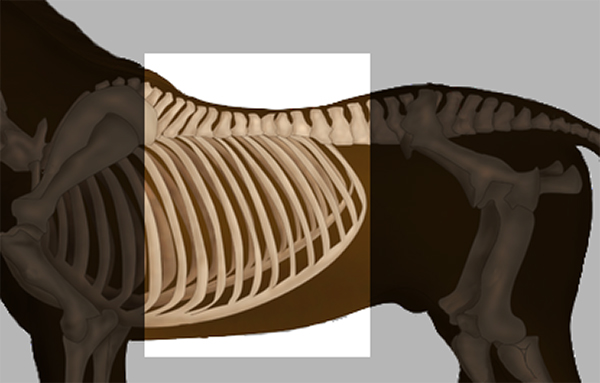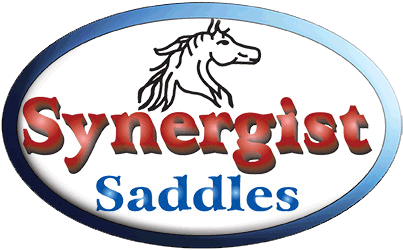When it comes too conformation and saddle fit, there are certain issues that can be a challenge for a saddle maker. When I look at the conformation of a horse or mule I throw out the typical things most people first look at like bone structure, musculature, body proportions, straight legs, etc.BeforeI fall in love with a horse I want to know how well he can hold a saddle. So I focus my attention in the area from the back of the shoulder blade to the last rib.
 The first thing I want to know is how well this back will hold a saddle side to side so I look at the wither right behind the back of the shoulder blade. The first 4 inches or so behind the shoulder blade is very important for lateral stability of the saddle.
The first thing I want to know is how well this back will hold a saddle side to side so I look at the wither right behind the back of the shoulder blade. The first 4 inches or so behind the shoulder blade is very important for lateral stability of the saddle.
Generally speaking, the wider the rib cage, the lower the spinous processes are going to be which results in a lower wither. If the horse or mule is mutton withered in this area, with the ribs coming out of the spine almost level to the ground, there is not much to keep the saddle in place side to side. An animal with a low withered, barrel shaped rib cage is going to teach a rider how to get on quick and then stay in the middle of the saddle. If the rider takes his balance out from the center very far the saddle is going to start to slip to that side.
 A higher withered animal, with ribs that angle down from the spine, are going to give the rider the lateral stability to hold the saddle side to side. This is the type of animal a trick rider would be looking for. If the ribs come out at an even steeper angle as in the slab sided horse, this can cause problems because as the angle the ribs leave the spine increases, the ability for the back to disperse weight decreases.
A higher withered animal, with ribs that angle down from the spine, are going to give the rider the lateral stability to hold the saddle side to side. This is the type of animal a trick rider would be looking for. If the ribs come out at an even steeper angle as in the slab sided horse, this can cause problems because as the angle the ribs leave the spine increases, the ability for the back to disperse weight decreases.
Just like in Goldilocks and the Three Bears, as far as the wither area is concerned, I look for something in the middle. Not too high, not too low.

